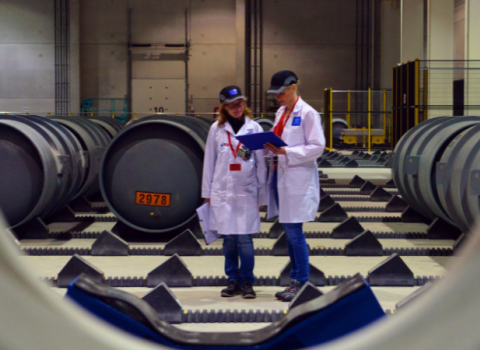Nine countries around the North Sea have signed up to the North Seas Countries’ Offshore Grid Initiative, a framework for regional cooperation in the development of an electricity grid for transmitting wave, wind and tidal power.
Belgium, Denmark, France, Germany, Ireland, the Netherlands, Norway, Sweden and the UK signed the memo last week, along with Luxembourg.
To date in Europe there are 948 offshore wind turbines in 43 fully operational offshore wind farms, with a total capacity of 2,396 MW.
The signing ceremony took place last week at a conference in Ostend, jointly organised by the Belgian EU Presidency and the European Wind Energy Association (EWEA).
Belgium’s Director General for Energy, Marie-Pierre Fauconnier said, “The intergovernmental initiative aims to create an integrated off shore electricity grid in the North Seas, […] identified by the European Commission as one of the EU’s six infrastructure priorities in the field of energy.”
Meeting cleantech goals
The North Sea offshore grid is crucially important to harness the enormous potential of offshore wind power and to achieve Europe’s climate and energy goals, Christian Kjaer, Chief Executive of EWEA told the conference. “It is vital that European countries work together to create the North Sea grid, which will improve security of energy supply and bring more competition into the electricity market. Europe needs this international infrastructure to connect offshore power to onshore grids,” Kjaer said.
Daniel Dobbeni, the president of the European Network of Transmission System Operators for Electricity (ENTSO-E), representing 42 system operators from 34 countries, told delegates, “To fulfil both the European and national energy and climate change policies, the installed renewable energy sources in electricity grids need to be significantly increased, mainly in the North and Baltic seas. In the case of the North Sea Region, wind power will be installed in places where previously there was no need to build a transmission grid.” As a result network operators are having to face up to major challenges in extending their grid onshore.
RenewableUK, the leading renewable energy trade association in the UK, welcomed the signing of the memo. Gordon Edge, Director of policy. said, “Large scale interconnection is vital if we are to connect up our massive offshore wind potential and integrate it into European Markets. [The] agreement is a vital first step forward in agreeing the rules of the game, without which investment cannot happen.”





 A unique international forum for public research organisations and companies to connect their external engagement with strategic interests around their R&D system.
A unique international forum for public research organisations and companies to connect their external engagement with strategic interests around their R&D system.